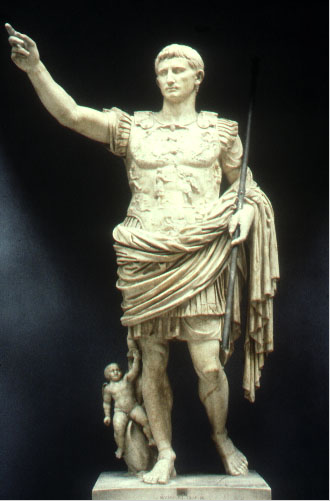As we saw in yesterday’s posting, the whole issue of
separation of Church and State is key to understanding why — whether he meant
to or not — Henry II had Thomas à Becket killed. The first thing for someone of the
twenty-first century to understand, however, is that “separation of Church and
State” may not mean what the secular politicians and history books tell you it
means.
 |
| Not lyin', have a friend for lunch. |
The ancient doctrine of separation of Church and State is
rooted firmly in the Roman civilization that was Christian Europe. The Romans —
at times to modern eyes seeming to drift between being the quintessential
individualists and the perfect collectivists — carefully divided human society
into three discrete forms.
To most people today, the only “society” that exists is the
civil order: the State. As far as the Romans were concerned, this was only one
form of society and, in a sense, the least important of the three. Civil
society was concerned with the body politic, the Res Publica (the “Public Thing”), and was supposed to stay out of
the other two forms of society, the family and the temple.
Then there was, first and foremost in Roman eyes, domestic
society, ruled over by the Pater Familias,
the “Father of the Family.” Domestic society — the family — in Roman society
was the basis for everything. The family was both a civil and a religious body
distinct from the State and the temple. A family had its own “household gods” —
its domestic religion (making the “domestic church” more than a catch phrase) —
and its own legal code, almost inevitably unwritten, but very real and
supported by an immense weight of tradition.
The Pater Familias
was thus, within the confines of the family, both head of a mini-State and the
chief priest. In theory the power of the Pater
Familias was so great that he could assemble a “domestic court” and try
members of his familia (the nuclear
family, ancillary relations, and slaves) for crimes against the family, whether
domestic or religious (there frequently being no real difference between the
two).
Until the influence of Christianity and, to some degree, Stoicism, became
pervasive, the Pater Familias could
act as accuser, judge, jury — and executioner. Some of the most famous stories
in Rome’s admittedly somewhat mythical history involved the Pater Familias executing a disobedient
son or daughter, while the punishments meted out to “bad” slaves were often
ferocious in their savagery. The only check on the power of the Pater Familias was social pressure.
 |
| The Divine Augustus |
Nor could the State or religious authorities interfere. Once
while attending a banquet, Augustus Caesar — head of both Church and State —
was only able to stop the execution of a slave who had accidentally broken a
valuable goblet by instantly doing the same thing himself. The owner had the
domestic right to do anything he liked to his clumsy slave — but Augustus’s quick
thinking made it clear that the owner would no longer be a “friend of Caesar”
if he did so.
Next was “religious society,” that which over the gods ruled
directly, which we understand today as “Church.” As far as the Romans were
concerned, anything that came directly under some god or other was the purview
of the priests, the heads of each discrete religious society or “temple.” The
games, for example, had to be opened by a priest, because they were ostensibly
in honor of the gods. Foreign relations, because they involved relations
between the people of one god to the people of another god, were handled by a
special class of priests, as were a host of other things that we today simply
assume should come under the State.
Crimes within religious society in the Roman view properly
came under the jurisdiction of the temples. If someone committed what would
ordinarily be considered a civil crime within the precincts of a temple, he was
tried in a temple court. Similarly, if a priest committed a crime, he was
either tried in a temple court, or stripped of his priesthood and tried in
civil court.
 |
| A plethora of priests in procession. |
Because certain functions of the head of State were thus
construed as “religious,” the head of State had to be a priest. Since he was
civil head of the Roman people, it made sense (to the Romans) that he should
also be religious head of the Roman people. Hence Caesar was usually named
Chief Priest of the Republic, or Pontifex
Maximus — “Great Bridge Builder” between the gods and man, and primary
intercessor for the common good and the needs of the “Public Thing,” the Res Publica. Oddly enough to modern understanding,
most of the Caesars tried to keep religious and civil affairs separate — civil
society and religious society were considered two distinct things, and the
orderly Roman mind refused to mix them.
